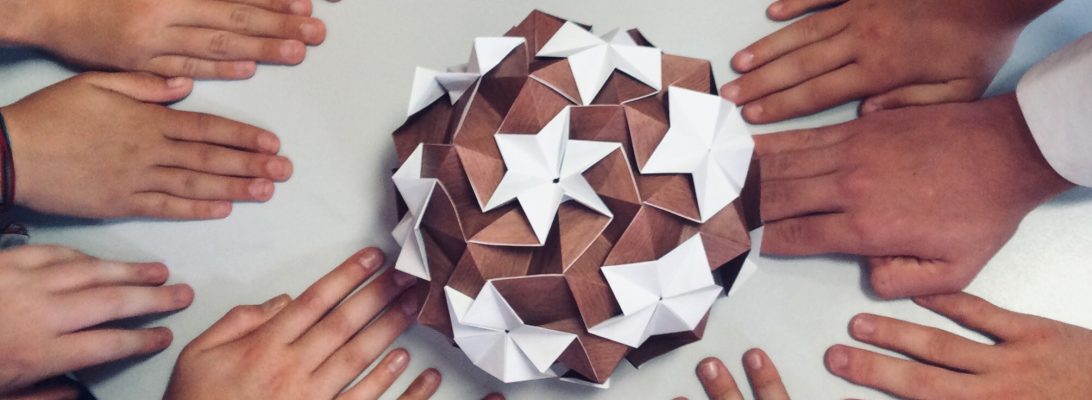It was late in the semester, I was looking for a folding project (to add to the other 4 already on my board – procrastigami strikes again) and noticed in my feeds a 25-day program by Madonna Yoder called “Advent of Tess”. I guess I am supposed to know about Advent, having worked in a Catholic boys school for 33 years, but… apparently it is the 25 days in December leading up to Xmas (learn something every day)
The idea was that Madonna released a CP and a video tutorial each day for 25 days, victims start with hexagons of paper pre-creased into 16-grid triangles, and collapse increasingly difficult combinations of tessellation techniques on the page.

The first few were easy, and collapsed simply, but then I decided I did not need the tutorials and proceeded to mark up the paper with the day’s CP and collapse from that. This approach came awry pretty quickly as the elements began to argue for the same real estate on the sheet and I learned that sequential development was way more sustainable.
The folds started with closed triangle twists (something I had done a lot of previously, so found accurate placement of these fairly easy. We later progressed to “open” triangle twists, which are much harder, and require a “setup” that uses paper tension to define the lines off-grid that were the sides of the triangle.

We then progressed to closed hexagon twists (again, something I had done lots of beforehand) and refined them into “open” hexagon twists – a fascinating variation of a “star puff” of which I had passing familiarity.

Rhombus twists continued to mess with my head. “closed rhombus twists require a “diamond” to define the narrow diagonal and paper tension to collapse the long points – it took me ages to get them right (and neat). “Open” rhombus twists did my head in – the “anvil” shaped setup for the narrow diagonal kept getting lost in the pleats and many of them I ended up “freestyling” then tidying up using the resting geometry when everything was flat again.
Layer management was then tackled – easy vs hard collapse sequences and then the hardest stuff of all – stacked geometry. At first they look easy, then you realise there are elements UNDER other elements, others that WRAP others.

It is AMAZING to me that I managed to achieve all the folds on the first try – although there were some seriously hairy moments when I was completely lost and had to “unwind” my progress back to an earlier state before advancing again.
I learned a LOT about tessellations, including how beautiful some of them are when back-lit – and oddly how different the front and back is in terms of the back-lit pattern. Layers and layer order greatly enhance the shadow play of these folds.

I now have another 25 tessellations to add to my growing collection of surface deformations and treatment folios – all useful techniques to incorporate in other things.
It never ceases to fascinate me as to what you can encourage a flat sheet of paper to do, and just how far you can push it. Tessellations are all about the celebration of geometry – more importantly geometry that repeats (or tiles) – most of the “Advent” folds are a single “molecule” that can be repeated in vast quantities on much bigger fields – working out how to repeat them and the required layer management is an art and a science.
I am really grateful to have been able to follow along as Madonna Yoder introduced folds, and keep up with the techniques: It takes a particular spatial ability to comprehend the consequence of a paper manipulation – I like that aspect a lot and have gotten quite good at visualising the fold before committing any creases – a skill i am sure has saved many a model from being crumpled.
Those of you who read to the end would realise that these folds represent 25 DIFFERENT models – atypically I have decided to allocate them collectively 1 blog number. Amassing the photographic records of them has been an exercise in logistics on it’s own.

